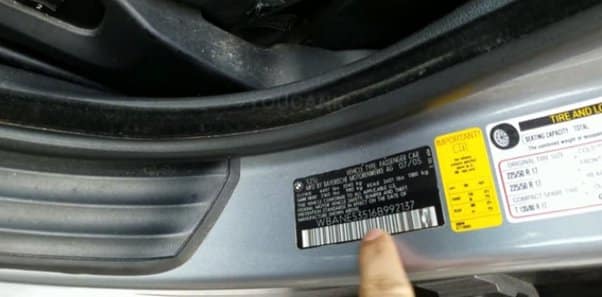Introduction: How a Sequence of 17 Digits Solves Thousands of Problems
How many times has a wrong order stalled a repair? A radiator that doesn’t fit. A belt that slips. A pump that won’t mount. Those aren’t minor inconveniences. They’re blockers. Here’s the better way: learn how to search for car parts by VIN number and eliminate all that.
One standout platform in this space is EpicVIN. Vew epicvin.com vin number search to find fast and verified results. It simplifies the experience and surfaces the right matches.
What Is a VIN?
Each vehicle leaves the production line with a unique Vehicle identification number — a serial code encoding everything from the model information to airbags and trim level. It’s like a fingerprint for machines.
Here’s what it can easily find:
- Characters 1–3: Manufacturer and country
- 4–8: Body type, platform
- 9: Check digit
- 10: Year of production
- 11–17: Production line sequence
Decoding this gives access to over 30 categories of factory data. That’s why VIN-based searching guarantees precision when buying auto parts.
Where to Find the VIN on a Vehicle

Most vehicles display the VIN in at least two places. Common areas include:
- Inside the door frame on the driver’s side
- Bottom of the windshield, near the dashboard
- Near the radiator support
- Stamped on the engine
- On insurance and title paperwork
Before starting a search, ensure you have the full part number. Avoid guesswork. Enter all 17 numbers. Some older vehicles may have alternate formats, but modern systems require precision.
VIN Lookup: A Powerful Shortcut
Let’s say someone needs a throttle body for a 2016 crossover. They go online and search by model, but the engine variant changes mid-year. Two different part numbers appear.
Instead of gambling, they enter the VIN, run a vin lookup, and receive one answer. The correct one.
Platforms like EpicVIN do this well. Their lookup tools cross-reference thousands of parts, verifying each one for fit and specs. Once a match is found, they return the part number, description, and availability. From there, buyers can quickly add the right auto parts to cart.
Why VIN-Based Search Is Better Than Manual Filters
Manual filters ask users to select make or model. But that doesn’t account for mid-cycle changes, trim upgrades, or factory-specific adjustments. One vehicle can have six alternator variants depending on its plant and engine.
When using a VIN, the system references actual build data. It returns only the correct parts, saving hours of searching and countless returns.
A mechanic once ordered an EGR valve for a hybrid SUV based on its model. Wrong fit. Different engine. The solution? A simple vin lookup. He entered the vin, received the exact part number, and ordered confidently. The repair wrapped in minutes — not days.
What to Do Before You Start Searching
To ensure the smoothest results when you search by VIN:
- Clean the digits and confirm visibility (especially if faded on metal)
- Cross-check the number against vehicle paperwork
- Use trusted tools with certified lookup databases
- Enter all characters accurately
- Compare the returned information to the original request
Even a single error in a digit may misidentify the vehicle, causing a cascade of wrong results.
Benefits of VIN Lookup for Buyers and Mechanics
- Reduce inventory confusion
- Minimize return volume
- Prevent installation errors
- Save money by avoiding trial-and-error
- Speed up sourcing for rare auto parts
When searching by VIN, the system matches real-world production data. For bodywork, interior components, engine accessories — the code knows more than most human guesses.
Common Mistakes to Avoid
- Misreading a digit: Happens often with 1 vs I or 0 vs O
- Using a partial number: Always use all 17 characters
- Copying from an old registry: Confirm against physical markings
- Ignoring returned specs: Always verify year, trim, and fitment
Mistakes here cost money, time, and sometimes, safety.
Conclusion: One Code to Rule All Parts
The VIN isn’t just a requirement for registration. It’s a tool — possibly the most powerful in the hands of anyone sourcing auto parts. With the right lookup, you unlock a full archive of build-level detail. You find the correct part faster. You add it to the job with full confidence. You fix the vehicle with fewer steps.
Search better. Order once. Ensure the fit.
FAQ
1. Can I enter a VIN manually or do I need a scanner?
You can do either. Scanners reduce typing mistakes, but manual entry works as long as it’s accurate.
2. Can I use the VIN to find engine-specific parts?
Yes. The Vehicle identification number includes engine data to help you locate exact-match parts.
3. Why is VIN-based searching better than filtering by model and year?
Because searching by model and year misses critical variations. Trim packages, mid-cycle updates, and engine changes all affect fitment. VIN lookup uses exact build information— that’s what makes it reliable.
4. Do VIN lookup tools include part numbers?
Yes. Many searches return the manufacturer’s part number for verification.
5. Is using VIN lookup secure?
Reputable platforms protect your data. The VIN doesn’t expose personal information.


